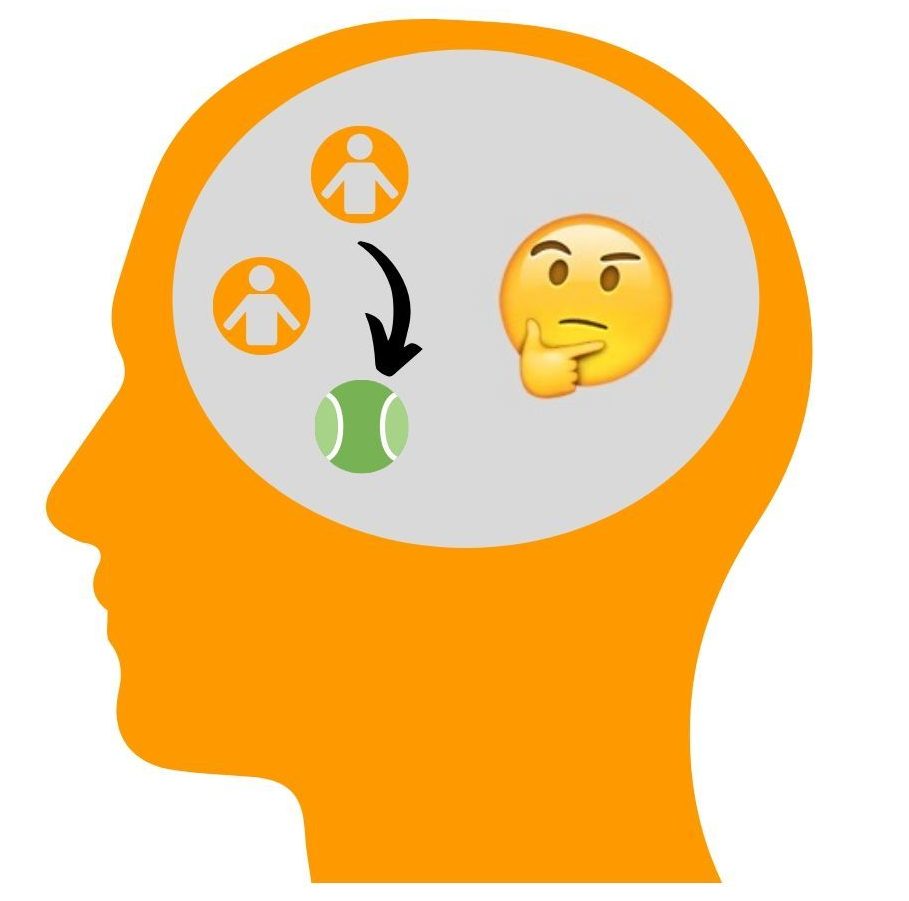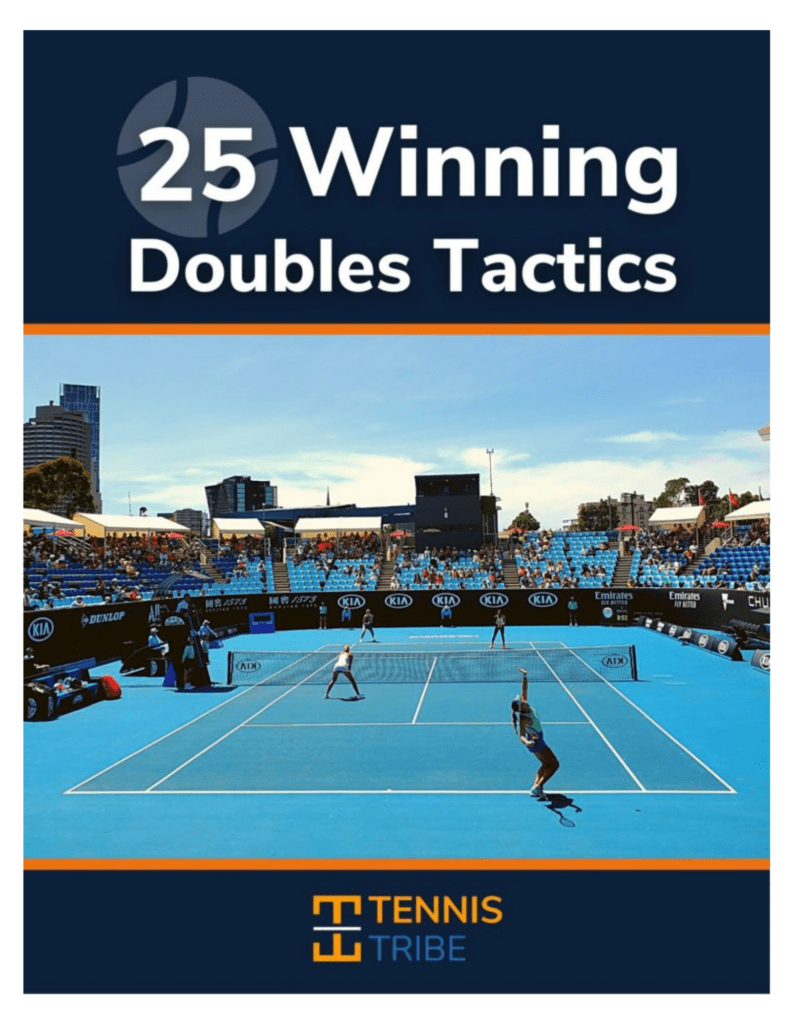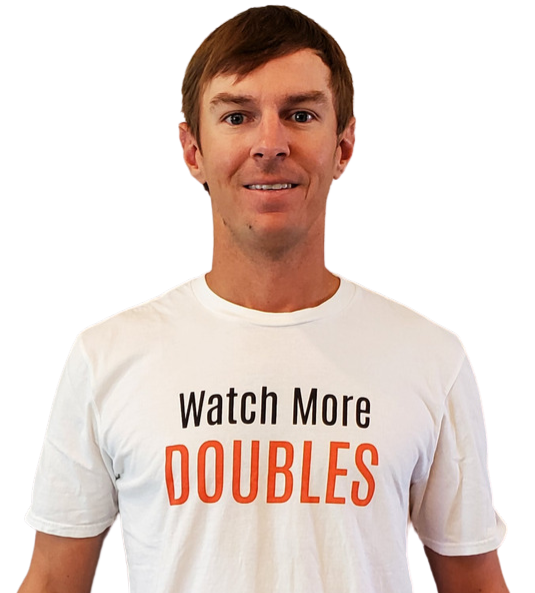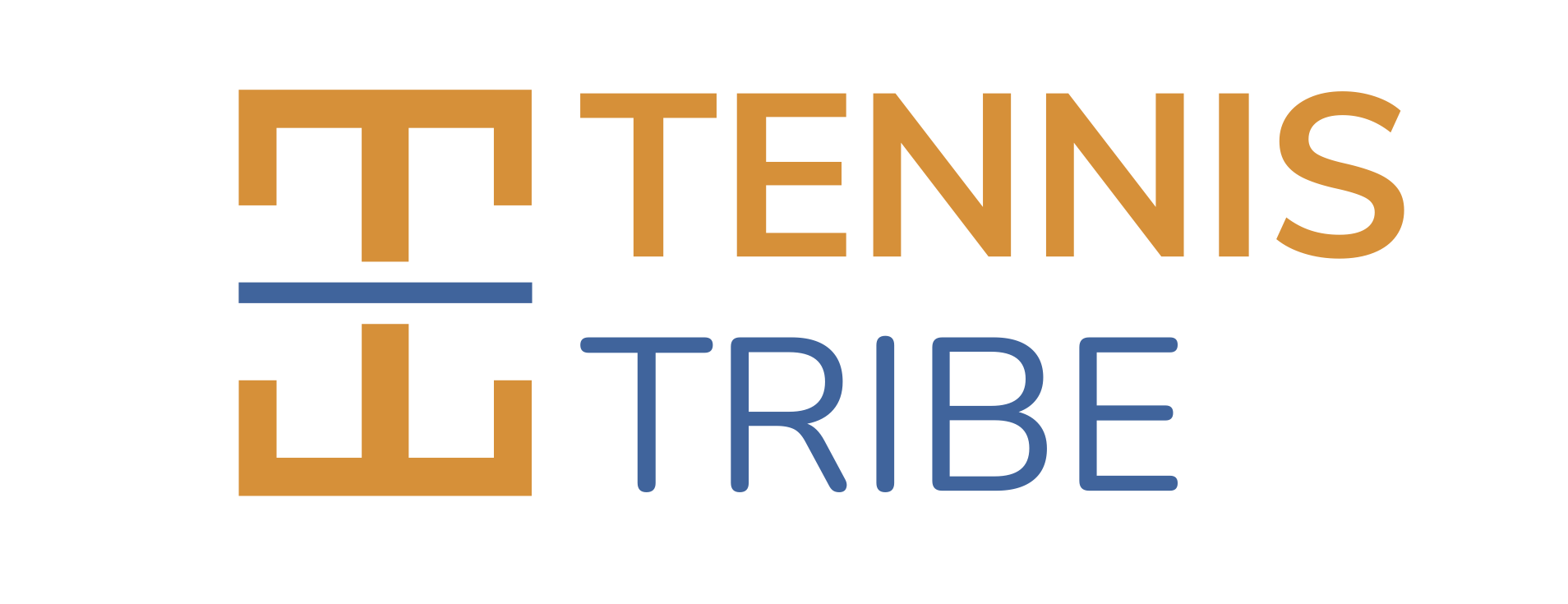Below, you’re going to learn how to get the most out of your tennis potential by adding this one thing to your game.
The serve and volley is nice to have.
Having a BIG John Isner serve would be great too, then you don’t have to volley.
But there’s something else that can help you more than anything else on the doubles or singles court, that is almost never taught by tennis coaches.

What is it? Let’s look at an example.
Note: This is part 3 in a 3 part series on the mental side of doubles.
Part 1 is here
Part 2 is here.
How The Smartest Tennis Players Win
John & Jan are playing a mixed doubles match against Frank & Fran.
The J-team comes out and gets an early break to take a 2-0 lead. Then they hold serve at deuce to go up 3-0.
In the next game, Frank & Fran make an adjustment. They decide to use Australian formation in the ad court to let Frank hit a forehand groundstroke, and to force John to make a decision. He can hit down the line to the open court, or at the net player on the return.
John struggles and only makes every 3rd return. It changes the momentum and the F-team comes back to take the set 7-5.
The second set is more of the same, and Frank & Fran win 7-5, 6-3.
Have you ever been on John & Jan’s team?
So what’s the difference between the Franks & Frans vs the Johns & Jans of the tennis world? It’s not the serve, or forehand, or volleys.
It’s their “on-court awareness!”

25 Winning Doubles Tactics Guaranteed to Help You Play Smarter
Ebook with 25 expert serve (7), return (5), net-play (5), baseline (4), & approach (4) tactics you can use in your next doubles match.
On-Court Awareness is the Most Important Skill to Develop as a Tennis Player
What do I mean?
Of course, a good doubles match requires more than one basic adjustment to change the momentum, but this is constantly happening on the tennis court in singles and doubles.
It’s like a game of chess, where one side makes a move or adjustment and the other has to respond.
Frank & Fran have the ability to notice trends, patterns, and tendencies during the match. They use that knowledge to improve their in-match strategy between every set, game, and point.
When John & Jan start losing, they:
- Yell at themselves.
- Try harder.
- Swing bigger.
- Try to fix their technique.
- Blame their doubles partner.
- Get very frustrated, slam balls, smash racquets etc. 😡
When Frank & Fran start losing, they:
- Ask questions. 🤔
- Find patterns.
- Seek out weaknesses.
- Figure out ways to hit fewer backhands (weakness) & more forehands (strength).
- Make big strategic adjustments.
- TALK with each other!
- Experiment with different positioning and movement.
The key for Frank & Fran is… they’re always getting better at these tactics.
Constantly improving their on-court awareness so they can beat players who practice more & have bigger shots simply by outsmarting them.
- What is the difference, mentally, between the J-team and the F-Team?
- How can we become more like Frank & Fran?
- What are the right questions to ask on the doubles court so we can find the strategic changes that need to be made?
I cover all this in my course on the mental game, but here are a few of my favorite questions to ask.
Free Weekly Doubles Lessons
Join the #1 Doubles Strategy Newsletter and get my Net Play Guide: 3 Doubles Tactics to Force Errors & Get More Easy Volleys for free!
– Will Boucek, ATP & WTA doubles strategy analyst

“I found your site a couple weeks ago and used your guide for net play. It worked well! Playing again this morning so we will see how it goes!”
– Julie, Club Doubles Player
My Favorite In-Match Questions
If we played that point 10 times, how many would I win?
The goal is to determine if we got luck, or if we’re playing the right way. If the opponent missed an easy overhead, the answer might be 2. In that case, we got lucky.
Who is the weaker of the two opponents? What is their weaker shot?
Use this during points. If you have an easy groundstroke, where you can hit anywhere, attack the weakest player’s weakest shot.
How can I match up my team’s strengths against the other team’s weaknesses?
Usually, this means making the opponents hit backhands, while you hit forehands. This might mean using different serving formations like the example above. If the opponent likes the net, use depth and lobs to take that away.
Note: It’s not always possible to find you’re strength since there is another team trying to take it away from you. So, prioritize forcing the opponent’s weakness. Then you can look to run around backhands and move forward.
Is there anything I could have done differently earlier in the point to increase our chances of winning?
Use this, even on points that you win. There is always room for improvement. Think back a few shots and ask if there was a better shot selection you could’ve made.
With all of these questions, talk to your doubles partner. If you can both be on the same page about the adjustments and game plan, you’ll be able to execute better and win more.

Loving all of your articles Will. I live in France . Just one question. Have you written a book about Doubles? If so would love to buy it. Looking forward to reading your articles. Regards Ian
Love these tips. Would live to see more on this topic for singles matches. Love the info.
Thanks Kristin! I don’t cover a lot of singles on this website but the same principles apply. It’s important to seek out weaknesses of the opponent, attack them, and make them uncomfortable. The first step is to be curious and aware after each point about what happened and why it happened so you can keep improving your strategy.
Good luck!